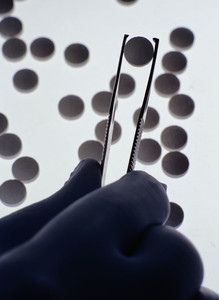Edward Kong, Research Assistant at the Yale University, Department of Economics, carried out a study into the factors that influence a generics maker’s decision to enter a specific market [1].
Data on generics entry and revenue data for abbreviated new drug approvals (ANDAs) approved between 2004 and 2014 for high-revenue drugs was included in the analysis. Data was collected from the US Food and Drug Administration’s (FDA) Orange Book, market revenue data from the Top 100 Drugs list from Drugs.com and firm revenue data.
The results showed that market size is positively associated with the entry of more generics. This effect is strong and robust to the inclusion of controls for the ‘age’ of the market and later new drug application (NDA) approvals. The results showed that ‘a 1% increase in sales predicts a significant increase of about three generics entrants (ANDAs), or equivalently, 11 drug products’. Mr Kong concluded that market size is an important predictor of generics entry.
Factors affecting a generics maker’s decision to enter a specific market were found to include firm size (measured as firm revenue), market revenue and expected competition (other generics entries). In fact, the effect of expecting an additional competitor was found to be similar to a US$540 million decrease in market revenues of the brand-name product.
Mr Kong also found that the expectation of one additional competitor reduces the probability of entry by 10% on average. On the other hand, a US$1 billion increase in market revenue increased the likelihood of a generics firm entering the market by 18.4% on average.
The effect of a financial subsidy on generics entry was also investigated. In the US the 180-day period of exclusivity carries a significant financial incentive, as it allows the generic drug to temporarily operate as a duopoly with the brand-name drug. Consequently, according to Mr Kong, many firms seek ‘Paragraph IV’ entry.
Mr Kong found that when using his discrete game model, giving a subsidy to all generics makers resulted in an increase in competition. ‘With a subsidy, all firms have more incentive to enter, but they also realize that the equilibrium probability of competitor entry has also increased, which tapers the overall effect of the subsidy.’ He also found that a fixed tax on entry, although reducing entry, also reduced competition, therefore, having less effect on decreasing entry than expected.
Conflict of interest
The author of the thesis [1] did not provide any conflict of interest statement.
Editor’s comment
Readers interested to learn more about competition and generics are invited to visit www.gabi-journal.net to view the following manuscript published in GaBI Journal:
Promoting a competitive generics market in the US
GaBI Journal is indexed in Embase, Scopus, Thomson Reuters’ ESCI and more.
Readers interested in contributing a research paper in a similar area to the GaBI Journal – an independent, peer reviewed academic journal – please send us your submission here.
Related article
Competition in the generics industry
Reference
1. Kong E. Estimating competitive effects in firm entry with applications in the generic pharmaceutical industry. Yale University Department of Economics; 3 April 2016.
Permission granted to reproduce for personal and non-commercial use only. All other reproduction, copy or reprinting of all or part of any ‘Content’ found on this website is strictly prohibited without the prior consent of the publisher. Contact the publisher to obtain permission before redistributing.
Copyright – Unless otherwise stated all contents of this website are © 2016 Pro Pharma Communications International. All Rights Reserved.








 0
0











Post your comment